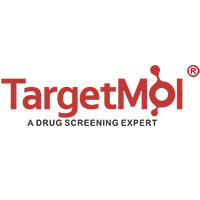| Name | Dexamethasone acetate |
| Description | Dexamethasone acetate (NSC 39471) is the acetate salt form of Dexamethasone, a synthetic adrenal corticosteroid with potent anti-inflammatory properties. In addition to binding to specific nuclear steroid receptors, dexamethasone also interferes with NF-kB activation and apoptotic pathways. This agent lacks the salt-retaining properties of other related adrenal hormones. |
| In vitro | Dexamethasone inhibits COX-2 mRNA expression induced by IL-1 in human articular chondrocytes. [1] Dexamethasone suppresses the cyclooxygenase-2 induction by tumor necrosis factor α (TNFα) with an IC50 of 1 nM in MC3T3-E1 cells. Dexamethasone binds to the glucocorticoid receptor and then to the glucocorticoid response element. [2]Dexamethasone (10 μM) induces osteoblastic differentiation of rat bone marrow stromal cell cultures with elevated mRNA expression of alkaline phosphatase osteopontin, bone sialoprotein, and osteocalcin. [3] Dexamethasone (5 μM) treatment decreases proliferation of adult hippocampal neural progenitor cells and SRE-driven gene expression. [5] |
| In vivo | Dexamethasone (2 mg/kg) reduces the number of the BrdU-labeled hepatocytes by 80% in male Fischer F344 rats. Dexamethasone (2 mg/kg) pretreatment suppresses the expression of both TNF and IL-6 after partial hepatectomy and significantly reduces the proliferative response of the hepatocytes in male Fischer F344 rats. Dexamethasone also severely diminishes the induction and expansion of oval cells induced by the 2-acetylaminofluorene/partial hepatectomy (AAF/PH) protocol but does not have any effect on the proliferation of the bile duct cells stimulated by bile duct ligation. [4] Dexamethasone (100 μg/kg) produces a significant decrease 59.2% of BrdU(+) hippocampal progenitor cells in Sprague–Dawley rats. Dexamethasone (100 μg/kg) decreases ERK activation in granule cell layer in Sprague–Dawley rats. [5] |
| Storage | Powder: -20°C for 3 years | In solvent: -80°C for 1 year | Shipping with blue ice. |
| Solubility Information | Ethanol : 16 mg/mL (36.82 mM), Sonication is recommended.
DMSO : 60 mg/mL (138.09 mM), Sonication is recommended.
|
| Keywords | protein-1 | nuclear | NSC-39471 | NSC39471 | Mitophagy | Mitochondrial Autophagy | lipopolysaccharide | key | iNOS | Inhibitor | inhibit | inflammation | ILReceptor | IL Receptor | IL receptor | Hexadecadrol | GlucocorticoidReceptor | Glucocorticoid Receptor | genes | factor-kB | factor-AT | Dexamethasone acetate | Dexamethasone Acetate | Dexamethasone | Dexamethason Acetate | Bacterial | Autophagy | AnnexinA | Annexin A1 | Annexin A | (LPS)-induced |
| Inhibitors Related | Neomycin sulfate | Stavudine | Ampicillin sodium | Kanamycin sulfate | Sodium 4-phenylbutyrate | Sulfamethoxazole sodium | Hydroxychloroquine | Guanidine hydrochloride | Doxycycline | Paeonol | Naringin | Dimethyl sulfoxide |
| Related Compound Libraries | Bioactive Compound Library | Membrane Protein-targeted Compound Library | Anti-Cancer Clinical Compound Library | Anti-Viral Compound Library | Drug Repurposing Compound Library | FDA-Approved Drug Library | Anti-Cancer Approved Drug Library | Immunology/Inflammation Compound Library | Anti-Aging Compound Library | Bioactive Compounds Library Max | GPCR Compound Library | Anti-Cancer Drug Library |

 United States
United States





